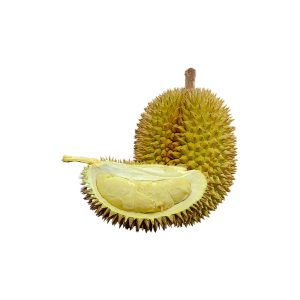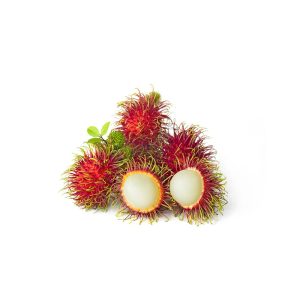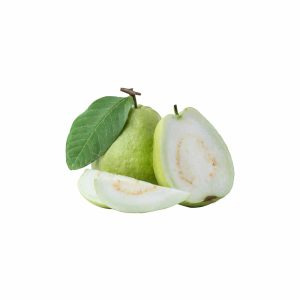I. Benefits of Sweet Potatoes
A. Providing Nutritional Components
1. Dietary Fiber
- Digestive Support: sweet potatoes are a rich source of dietary fiber, aiding in stimulating the digestive process, preventing constipation, and maintaining the health of the digestive system.
- Blood Sugar Maintenance: Fiber also plays a role in controlling blood sugar levels, preventing sudden spikes after meals.
2. Vitamin C
- Immune System Boost: Vitamin C is a powerful antioxidant, enhancing the body’s ability to resist bacteria and viruses, thereby protecting against diseases.
- Antioxidant Properties: Additionally, vitamin C helps protect cells from damage caused by free radicals and oxidative stress.
3. Minerals such as Potassium and Manganese
- Cardiovascular Health: Potassium plays a crucial role in maintaining stable blood pressure, helping to prevent the risk of cardiovascular issues.
- Bone Health: Manganese is an essential mineral involved in the formation and maintenance of bones, contributing to overall bone health.
These nutritional components not only make sweet potatoes a vital part of a healthy diet but also bring numerous health benefits to the overall well-being of the body.
B. Weight Management Support
1. Dietary Fiber Reduces Appetite
- Appetite Suppression: The high fiber content in sweet potatoes contributes to a feeling of fullness, aiding in appetite control and reducing the likelihood of overeating.
- Calorie Regulation: Fiber-rich foods are often lower in calories, making them a satisfying yet calorie-conscious choice for those looking to manage their weight.
2. Slow Absorption Starch Maintains Satiety
- Prolonged Satiety: The slow-absorbing starch in sweet potatoes plays a role in maintaining a prolonged sense of satiety, helping individuals feel satisfied for an extended period after consumption.
- Stabilizing Blood Sugar: The gradual release of glucose from slow-absorbing starch also contributes to stabilizing blood sugar levels, supporting weight management efforts.
C. Cardiovascular Health Support
1. Antioxidative Properties
- Reduced Cardiovascular Risk: The antioxidants present in sweet potatoes help reduce the risk of cardiovascular diseases by combating oxidative stress and inflammation within the cardiovascular system.
- Heart Health Promotion: Regular consumption of foods rich in antioxidants is associated with improved heart health and a lower incidence of heart-related issues.
2. Potassium for Blood Pressure Control
The potassium content in sweet potatoes contributes to the regulation of blood pressure, playing a crucial role in preventing hypertension and related cardiovascular problems.
D. Digestive Support
1. Dietary Fiber Maintains Gastric pH
- pH Regulation: The dietary fiber in sweet potatoes helps maintain an optimal pH level in the stomach, supporting the digestive process and promoting a healthy gut environment.
- Preventing Acidic Conditions: Adequate fiber intake can prevent overly acidic conditions in the stomach, reducing the risk of acid-related digestive discomfort.
2. Alleviation of Constipation
Sweet potatoes, being a good source of fiber, can contribute to alleviating constipation by promoting regular bowel movements and enhancing overall digestive health.
II. Ways to Use Sweet Potatoes
A. Culinary Preparation
1. Baking
– Ingredients:
- Sweet potatoes
- Honey
- Assorted spices (cinnamon, nutmeg).
– Preparation:
- Wash and scrub the sweet potatoes thoroughly.
- Cut them into wedges or slices.
- Drizzle honey over the sweet potato slices and sprinkle with desired spices.
- Bake in the oven until tender and golden brown.
– Serving Suggestions:
- Serve as a side dish or snack.
- Experiment with different spice combinations for varied flavors.
2. Steaming
– Ingredients:
- Sweet potatoes
- Assorted vegetables.
– Preparation:
- Peel and cut sweet potatoes into chunks.
- Steam the sweet potato chunks along with other vegetables until tender.
- Season with a pinch of salt and pepper.
- Serve as a nutritious side dish or part of a larger meal.
B. Salad Creations
1. Steamed Sweet Potatoes in Salad
– Ingredients:
- Steamed sweet potatoes
- Mixed salad greens
- Cherry tomatoes
- Cucumber
- Feta cheese.
– Preparation:
- Steam sweet potatoes until fully cooked but still firm.
- Cut the sweet potatoes into bite-sized pieces.
- Mix sweet potato pieces with salad greens, cherry tomatoes, and sliced cucumber.
- Crumble feta cheese over the top.
- Drizzle with your favorite dressing.
– Variations:
- Add grilled chicken or chickpeas for added protein.
2. Adding Ingredients like Pumpkin Seeds and Almonds
– Ingredients:
- Steamed sweet potatoes
- Mixed salad greens
- Pumpkin seeds
- Almonds
- Cranberries.
– Preparation:
- Steam sweet potatoes and cut into cubes.
- Toss sweet potatoes with salad greens.
- Add a handful of pumpkin seeds, almonds, and cranberries.
- Dress with a vinaigrette or balsamic glaze.
- Serve chilled as a refreshing and nutrient-rich salad option.
Incorporating sweet potatoes into various dishes provides not only a delicious and unique flavor but also a nutritional boost, enhancing the overall dining experience. These culinary methods showcase the versatility of sweet potatoes in both savory and salad preparations.
C. Porridge Preparation
1. Using Steamed Sweet Potatoes for Congee
– Ingredients:
- Steamed sweet potatoes
- Rice
- Water or broth.
– Preparation:
- Cook rice in water or broth until it reaches a porridge-like consistency.
- Mash or blend steamed sweet potatoes and stir into the congee.
- Season with spices and herbs according to taste.
– Serving Suggestions:
- Garnish with green onions, cilantro, or a drizzle of sesame oil for added flavor.
2. Adding Spices and Herbs According to Taste
– Ingredients:
- Steamed sweet potatoes
- Choice of herbs and spices (ginger, garlic, pepper).
– Preparation:
- Blend or mash the sweet potatoes.
- Cook the mashed sweet potatoes with chosen spices and herbs to enhance the flavor.
- Adjust seasoning according to personal preferences.
– Serving Suggestions:
- Serve warm as a comforting and flavorful porridge option.
D. Beverage Preparation
1. Making Sweet Potato Juice
– Ingredients:
- Sweet potatoes
- A small amount of preferred liquid (water or coconut water).
– Preparation:
- Juice the sweet potatoes using a juicer or blender.
- Add a small amount of water or coconut water to dilute the juice if needed.
- Strain the juice to achieve a smoother consistency.
– Serving Suggestions:
- Enjoy the juice on its own or mix it with other fruit juices for a unique blend.
2. Adding Ice and a Slice of Lemon for Enhanced Flavor
– Ingredients:
- Sweet potatoes
- Water
- Ice cubes
- Lemon.
– Preparation:
- Blend sweet potatoes with water to create a smooth beverage.
- Pour over ice cubes in a glass.
- Garnish with a slice of lemon for a refreshing twist.
– Serving Suggestions:
- Serve as a cooling and nutritious drink.
E. Usage in Desserts
1. Baking Sweet Potato Cakes
– Ingredients:
- Sweet potatoes
- Flour
- Sugar
- Eggs
- Butter.
– Preparation:
- Steam or bake sweet potatoes until soft.
- Mash or puree the sweet potatoes.
- Mix with flour, sugar, eggs, and butter to form a smooth batter.
- Pour the batter into molds and bake until golden brown.
– Variations:
- Experiment with spices like cinnamon or nutmeg for added flavor.
- Add nuts or dried fruits for texture.
2. Making Ice Cream or Pudding with Sweet Potatoes
– Ingredients:
- Sweet potatoes
- Milk or cream
- Sugar
- Vanilla extract.
– Preparation:
- Cook or bake sweet potatoes until tender.
- Blend or mash the sweet potatoes into a smooth consistency.
- In a saucepan, heat milk or cream and sugar until sugar dissolves.
- Combine the sweet potato puree with the milk mixture.
- Add vanilla extract for flavor.
- Chill the mixture, then churn for ice cream or refrigerate for pudding.
– Serving Suggestions:
- Garnish with a sprinkle of cinnamon or crushed nuts.
- Serve the ice cream in cones or the pudding in individual cups.
These diverse culinary uses highlight the adaptability of sweet potatoes in creating a variety of delicious and nutritious dishes. Whether incorporated into savory porridge, refreshing beverages, or delectable desserts, sweet potatoes add a unique and wholesome element to the dining experience.
II. Considerations when Using Sweet Potatoes
A. Selection
1. Choose Smooth Sweet Potatoes without Cracks or Damage
- When selecting sweet potatoes, opt for those with a smooth texture and without cracks or visible damage.
- A visually appealing surface often indicates freshness and quality.
B. Storage
1. Store in a Dry and Cool Place
- Keep sweet potatoes in a dry and cool environment to maintain their freshness and prevent premature spoilage.
- Avoid storing them in areas with high humidity to prevent mold growth.
2. Avoid Direct Sunlight to Prevent Color Changes
- Store sweet potatoes away from direct sunlight.
- Exposure to sunlight can lead to discoloration and changes in texture, affecting both the appearance and taste.
C. Proper Cooking Techniques
1. Avoid Prolonged Cooking to Retain Nutrients
- When preparing sweet potatoes, it’s advisable not to cook them for an extended period to preserve their nutritional content.
- Overcooking may result in a loss of essential vitamins and minerals.
These considerations ensure that the sweet potatoes you choose remain fresh, flavorful, and nutritious. By adhering to proper selection, storage, and cooking practices, you can fully enjoy the benefits and deliciousness of this versatile and healthful ingredient.
D. Quantity of Consumption
- While sweet potatoes offer numerous health benefits, it’s crucial to consume them in moderation to prevent excessive calorie intake.
- Be mindful of portion sizes, especially if you are watching your calorie intake or managing your weight.
E. Consultation with Nutrition Experts
- In case of specific health concerns or dietary requirements, it is advisable to consult with a nutritionist or healthcare professional.
- Nutrition experts can provide personalized guidance based on individual health conditions, ensuring the incorporation of sweet potatoes aligns with overall health goals.
- They can offer insights into the appropriate quantity and frequency of consumption, taking into consideration individual nutritional needs and health status.
Considering both the quantity of consumption and seeking professional advice from nutrition experts contributes to a well-rounded and health-conscious approach when incorporating sweet potatoes into your diet.















